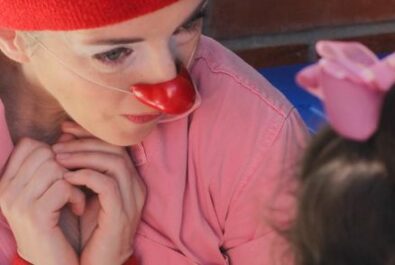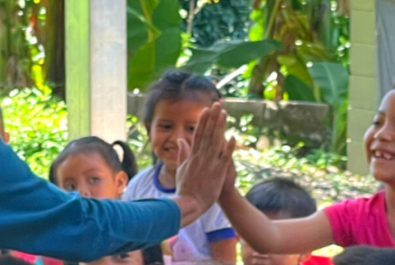Check out our April 20-28 tour in the Bay Area of the United States!
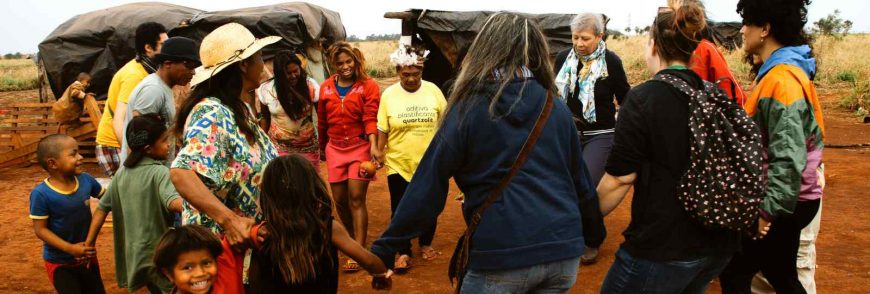
How to Share Art with the Guarani and Witness Both Pain and Joy
Do you know the Guarani?
The Guarani-Kaiowá are one of Brazil’s largest Indigenous communities. They’ve survived forced displacement since the late 1800s and increased violence since the 1950s when private capital took over vast territories, replacing eco-diversity with monoculture plantations.
And, also, if we only see the Guarani’s pain, we miss learning about who they are — including their rich traditions of ceremony and song.
In September 2022, Clowns Without Borders (CWB) returned to the Guarani community of Southern Brazil to listen, learn, share art, and laugh together.
In this post, you’ll learn about the current conditions of the Guarani people and we’ll share insights from our art exchange (a term that fits better here than tour — read on and you’ll understand why).
Warning: This post references child homicide. At CWB, we’re committed to sharing the context within which we work, including naming the human rights violations our audience members have experienced. We understand this content may be upsetting. If you prefer to skip this portion of the post and go straight to the photos and video, click here.
The Guarani: Searching for ‘the land without evil’
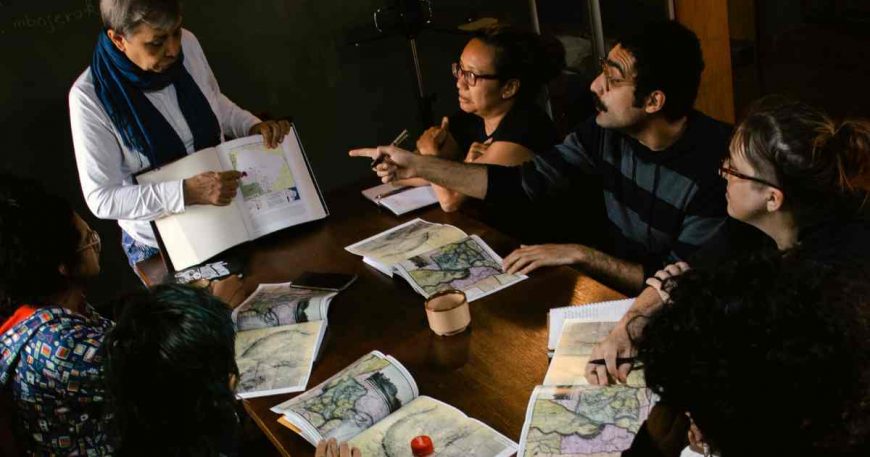
Guarani ancestors told of a place free from pain and suffering called ‘the land without evil.’ And, for hundreds of years, their descendants searched for such a place.
They have yet to find it.
Instead, the Guarani have experienced territorial displacement on a massive scale. In Mato Grosso do Sul, the Guarani previously occupied 350,000 square kilometers of forests and plains. Today, 24% of the remaining Guarani population (12,000 of about 50,000 people) live in just 30 square kilometers (the Dourados Reserve).
The reserve lacks adequate land for crops, hunting, or fishing. For more on the Guarani’s forced removal from ancestral land, see our Brazil 2019 blog post.
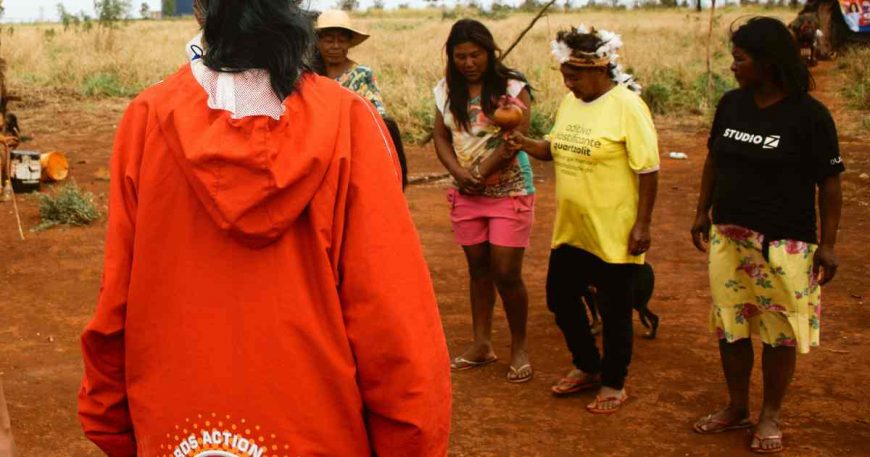
‘Danger is experienced on an everyday basis’
Performing artist Julie Moore recounts one disturbing event:
Maybe two hours before CWB was to perform, we get word that the body of a 13-year-old-girl, who’s part of the community we’re performing for, has just been found.
The community asked that even with this news, we perform the show as planned.
The team delivered a performance full of empathy and gentleness.

Homicides and assaults are all too familiar in the Guarani community. And the government does not protect indigenous people from ranchers’ gunmen and militias. Perpetrators often go unpunished.
What’s happening, as a whole, is genocide. It’s a genocide of indigenous peoples. It’s not of interest to the state to give indigenous peoples strength, to give them a voice.
Alice Rocha,
social worker with children’s services in Dourados
International Women’s Media Foundation
The community’s pain is real, and it’s ongoing.
CWB is a witness to the Guarani’s pain, and also their ceremony, song, and dance.

Joining Hands and Making Eye Contact, Rain or Shine
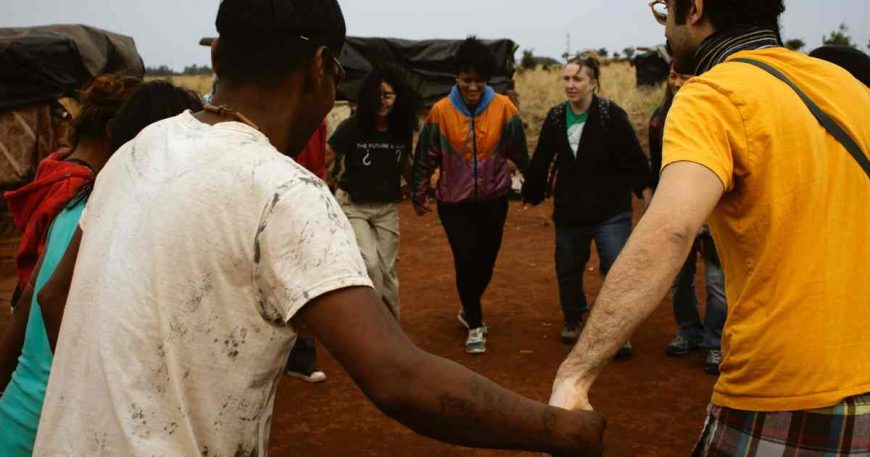
On tour, CWB is typically the first to offer a song. That wasn’t the case with the Guarani.
According to Julie Moore, the Guarani’s greeting was song and dance, “in every space we entered.”
For the team, the experience was vibrant, warm, and joyful.
They greeted us with joy and light and a genuine generosity of spirit. Even though many of the Indigenous people here live in difficult situations, facing the challenges of meeting basic needs, they were always so welcoming and happy to meet us and full of joy in sharing and connecting with us, and we with them.
Orlene Carlos, CWB Performing Artist
If you want to learn about the significance of song to the Guarani people, I encourage you to check out the following article by Valéria Macedo, Anthropologist and Professor at Universidade Federal de São Paulo, Brazil. She began working with the Guarani in 2005 and her 2011 article is called Tracking Guarani songs: between villages, cities and worlds.

Feats of Juggling Feet: Sharing Clowning and Performance Art
CWB artists Tetê Purezempla (Brazil), Kauan Scaldelai (Brazil), Ludmila Lopes (Brazil), Julie Moore (US), and Orlene Carlos (US) were pleased as punch to share their performance art and witty shenanigans of the highest order with the Guarani.
There were saxophone tunes, tables tossed by a foot juggler, and lots of zany clownish humor.
Here are some of our favorite shots from the performances.
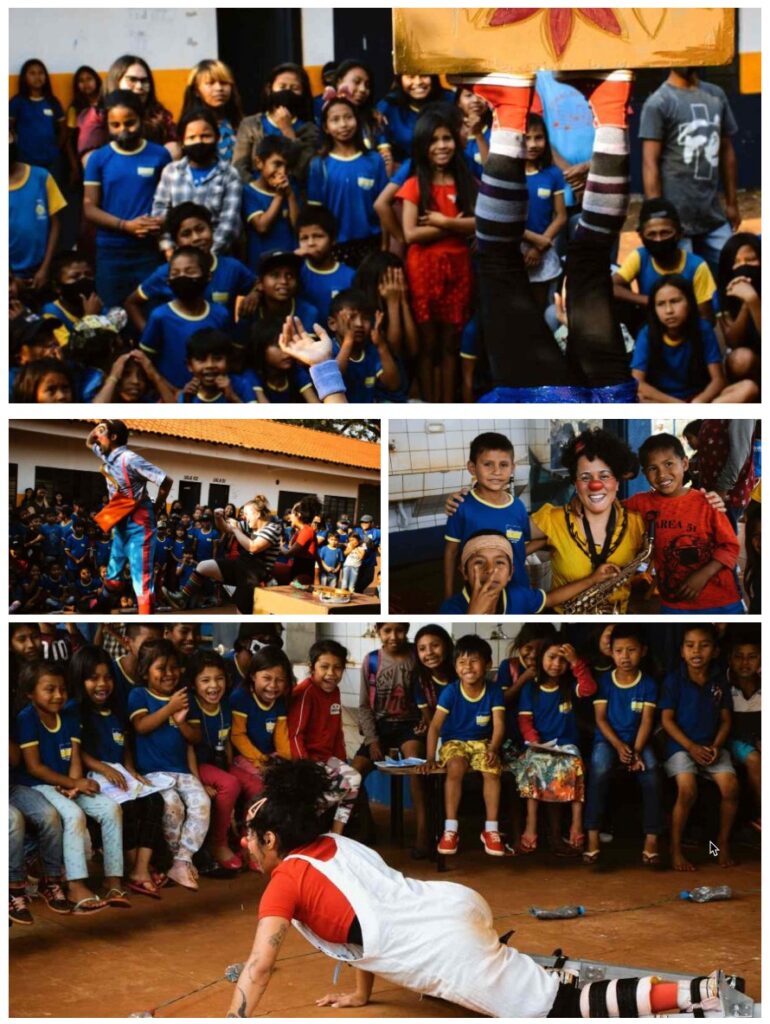
Participants [of our workshops] included Indigenous artists, university students, local artists, and educators. I enjoyed meeting them and sharing techniques and knowledge.
Orlene Carlos, CWB Performing Artist


Conclusion
CWB was honored to walk on the soil that the Guarani-Kaiowá are fighting for, exchange art, and listen to stories of both pain and joy.
CWB team members shared 17 performances, one workshop for those interested in the art of clowning, and one workshop for social workers.
To see more program photos, check out our video montage below!


